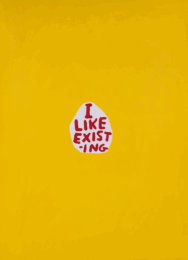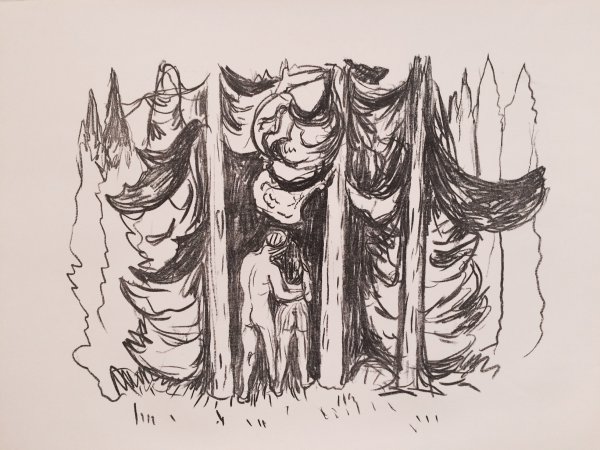


We ended last year talking about Picasso and linocuts. To begin the new year, let’s switch the artist and the medium, namely, Munch and lithographs. As you recall, Picasso with his printer Arnera invented a whole new technique to make colored linocuts. While Munch did create colorful lithographs before he moved to Paris in the late 1890s and discovered printmakers who specialized in color, some of his most substantial works in lithography were done when experimenting with wash and chalk and simple black and white, discovering the different depths and tones that could be achieved simply through ranges of black.*
Yes, Munch was a natural craftsman who was able to master new mediums quickly. And yes, he was innovative in pushing these mediums beyond their previously known boundaries. But what made the artist truly revolutionary was his unyielding force to create art that captured feelings— often despondent ones— during a time when it was considered radical to do so. In the early 20th century it was controversial to make expressionistic art that went beyond the external, into the soul. Munch’s response to this criticism was unwavering. As he wrote once, “We want more than a mere photograph of nature. We do not want to paint pretty pictures to be hung on drawing room walls. We want to create, or at least lay the foundations of, an art that gives something to humanity. An art that arrests and engages. An art created of one’s innermost heart.”**
To evoke these emotions in his work, Munch implored different techniques within each medium. It’s true his own memories and personal trauma were the catalysts for his images. It wasn’t enough, though, for the viewer to just witness Munch’s personal emotions. He had to draw them in. He had to make them reflect on their own emotions. One way he achieved this was by depicting figures in his images with their backs turned. In “Skogen” (The Forest) (W342), he does just that. The man and the woman are turned away, facing the forest. This image is a motif he revisited a number of times, finding new ways to express the sentiment with each version. Munch’s fear of women and struggle with relationships are at the heart of it. He’d witnessed relationships develop, grow, and then fall apart.
W342 is part of a series Munch made following an especially dark time in his life. This period, which included a failed romantic relationship, culminated in the artist having a nervous breakdown in 1908. While in recovery in Copenhagen, Munch confronted his inner demons head-on. Called “Alfa and Omega”, it’s a series of deeply expressive lithographs along with a prose poem, chronicling a made-up creation story of “the first humans” living on an island and tragically dying there.*** W342 expresses the psychological landscape of these lithographs. Similar to “The Scream,” Munch’s use of lines isn’t for decoration as much as it’s for showing a sense of turmoil.
In The Forest, with their back turned away, the audience has to figure out what is happening in the image. At the same time, however, the speculative nature of the image allows them to impose their own personal feelings onto it. The darkness and uncertainly of the lines that make up the forest evokes even more questions: Are the two people walking into or away from something? Is the audience part of it, or just observing it?
It’s these types of questions and Munch’s ability to project inner distress so acutely that sums up his brilliance. And maybe even more so, his way of turning pain into beauty.
Courtesy of John Szoke Gallery, New York.